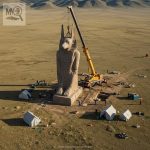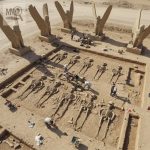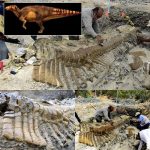Giant Skeleton Discovery in Desert Sends Shockwaves Through Science and History
- Thuong
- October 10, 2025
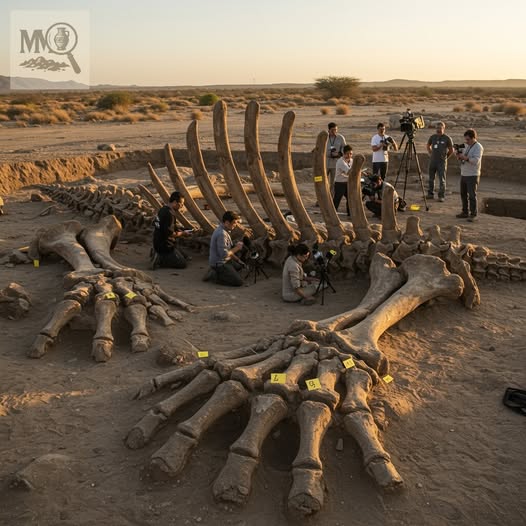
Giant Skeleton Discovery in Desert Sends Shockwaves Through Science and History
In an astonishing archaeological breakthrough that has captured global attention, researchers working in a remote desert region have unearthed what appears to be the massive remains of a humanoid skeleton—unlike anything previously documented in the annals of human history. Early footage, leaked online before authorities sealed off the area, shows rib structures towering above the excavation crew and a hand-like formation with bones several times larger than those of any known species. Within hours, the site was flooded with media teams, drones, and independent researchers, each seeking to understand whether humanity has just uncovered proof of a forgotten race—or something far beyond the human story.
The team initially believed they had stumbled upon fossilized megafauna, but closer inspection revealed anatomy unmistakably humanoid: an upright spinal column, elongated limbs, and proportionate finger bones. “If this structure proves authentic, it may force us to rethink our evolutionary tree entirely,” one anonymous expert commented. Geologists confirmed that the surrounding sediment dates back tens of thousands of years, possibly older, suggesting that the skeleton had been entombed long before the dawn of recorded civilization. The discovery immediately reignited debates surrounding ancient legends—from the biblical Nephilim to the Sumerian “giant kings”—raising profound questions about the intersection between myth and science.
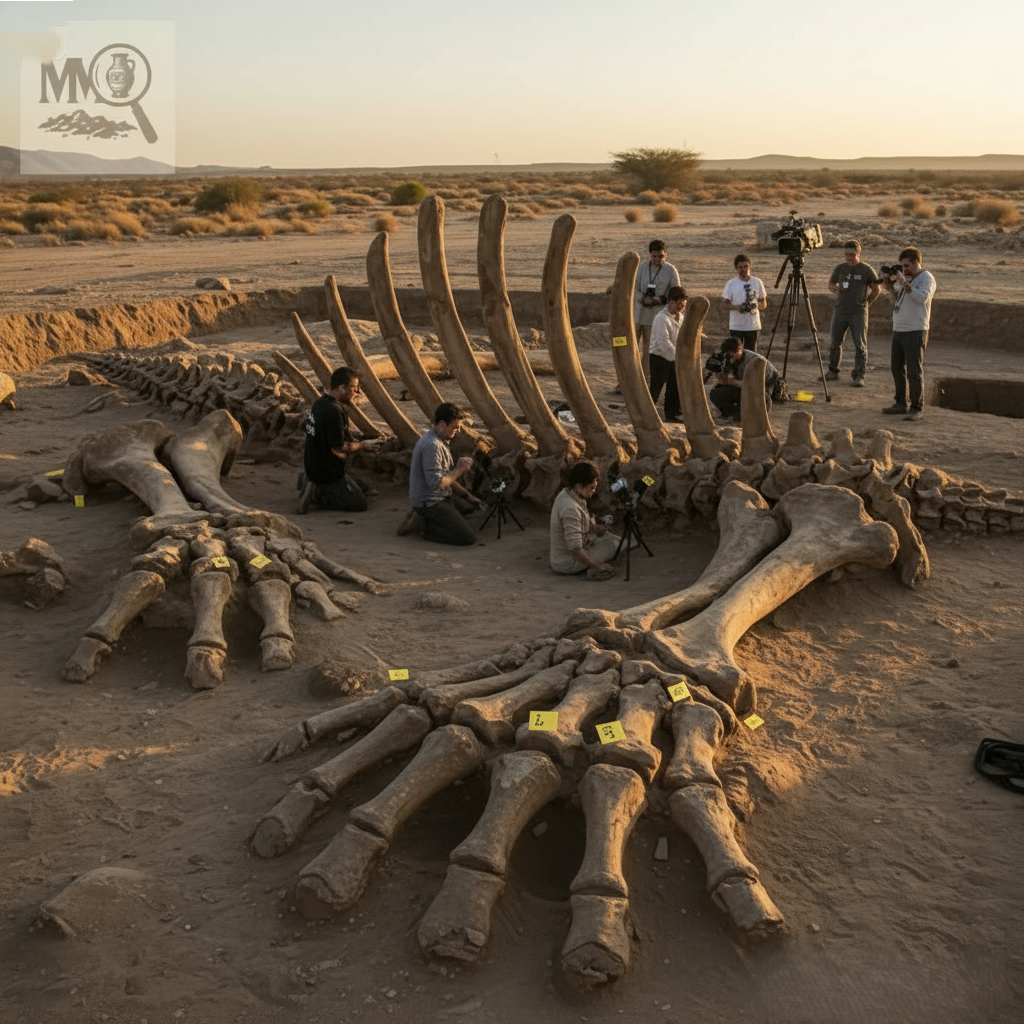
Government authorities swiftly cordoned off the area, deploying security forces to restrict public access. Researchers on-site were reportedly instructed not to share details pending “further verification,” though insiders claim that preliminary scans indicate the skeletal density and structure differ significantly from ordinary human remains. As the silence from official channels deepens, speculation has exploded online. Some users argue this could be a lost species of early hominid; others claim it’s evidence of an extraterrestrial presence in Earth’s distant past. Conspiracy theories have spread rapidly, accusing governments and scientific institutions of concealing “forbidden archaeology” that could rewrite the history of human origins.
Across academic circles, reactions are polarized. Traditional anthropologists have cautioned against premature conclusions, warning that photographic distortions and natural rock formations can mimic human-like features. Yet several independent experts who have examined the imagery insist that the bone alignment and cranial contours are too deliberate to be geological coincidences. The debate mirrors a long-standing divide in historical science—between those who adhere strictly to established evidence and those who believe ancient myths may contain factual remnants of lost civilizations or beings of extraordinary scale.
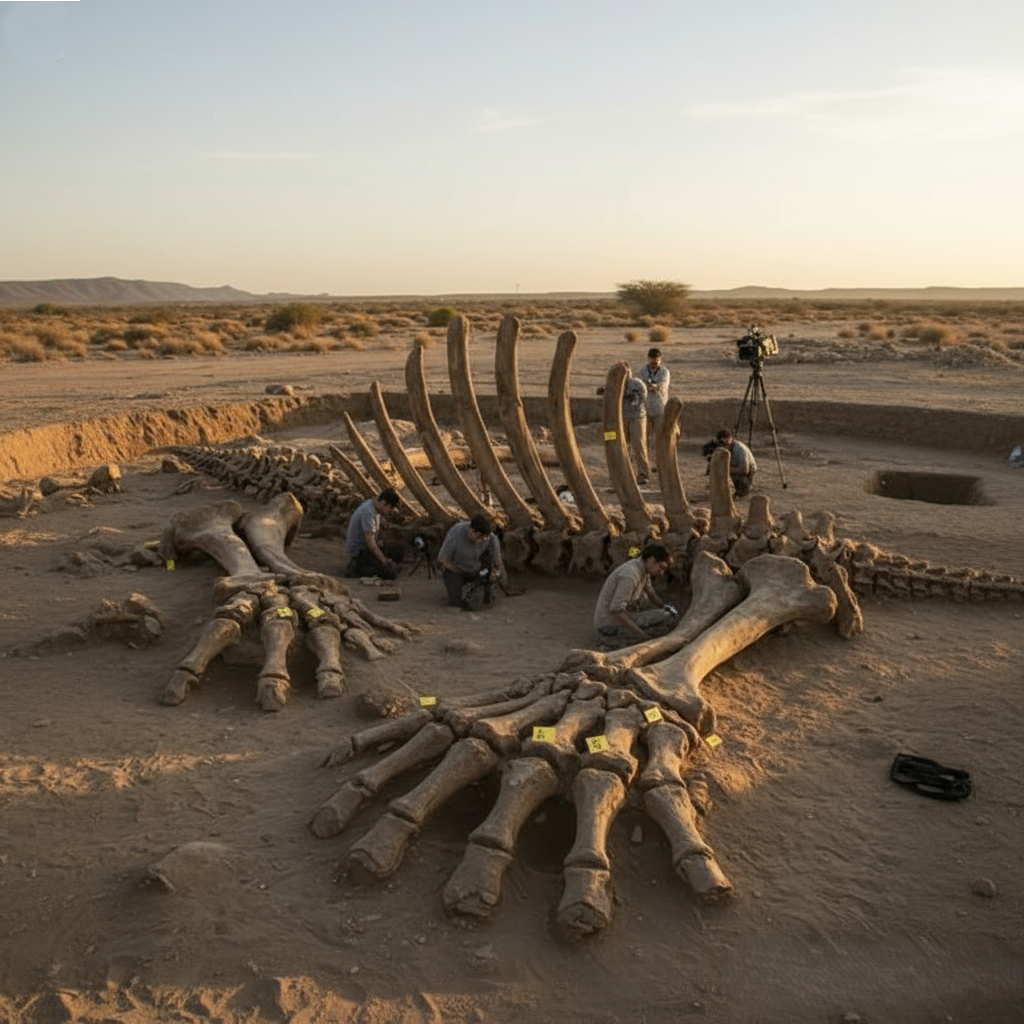
Meanwhile, the world watches in fascination as the mystery unfolds. Social media has erupted with hashtags like #GiantRevelation, #UnearthedTruth, and #HiddenHistory, as millions share theories, witness testimonies, and speculative reconstructions of what the being might have looked like. Journalists attempting to access the site have reported military checkpoints miles away, deepening the sense of secrecy and suspicion. For many, the question is no longer if giants once walked the Earth—but why their existence might have been systematically erased from history.
If verified, this discovery could mark one of the most profound turning points in modern science—a revelation that reshapes everything we know about human ancestry, the timeline of civilization, and our place within the planet’s ancient record. Until official results are released, however, the desert skeleton remains both relic and riddle—a silent giant whose emergence may challenge the very foundations of what humanity believes about its past.

